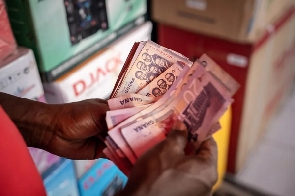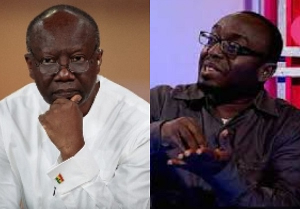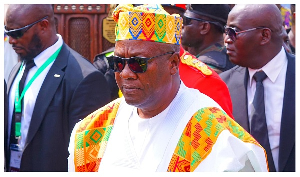The local currency has experienced a reversal of its recent gains, losing 1.48 percent. It traded at GH¢10.98 to the United States (US) dollar at the end of last week.
Initially, positive market sentiments prevailed and were attributed to approval of the US$3billion International Monetary Fund (IMF) bailout programme. However, an increase in demand for hard currency exerted pressure on the local unit despite tight supply conditions.
During a recent Monetary Policy Committee meeting, the Bank of Ghana decided to maintain its policy rate at 29.5 percent. This decision took into account factors such as easing inflationary pressure observed in April, which stood at 41.2 percent compared to 45 percent in March and 52.8 percent in February.
The relative stability of foreign exchange rates in recent weeks was also considered. Despite these factors, projections indicate sustained pressure on the cedi due to the spike in foreign currency demand – particularly for the American greenback.
Executive Director of the Young Investors’ Network (YIN), Kofi Busia Kyei, in recent comments emphasised the impact of ongoing discussions in the United States regarding the debt ceiling.
He noted that the feedback and uncertainty surrounding the negotiations had reversed gains made by the cedi within a short period.
“The cedi continues to depreciate at a concerning rate,” he noted.
The recent developments in the US, where top officials have reached a tentative deal to suspend the federal government’s US$31.4trillion debt ceiling, have directly influenced performance of the cedi. It is expected that the cedi’s depreciation could worsen if the US Congress reaches and passes an agreement.
The market analyst highlighted the importance of government implementing effective measures to address the issue and prevent further depreciation.
“Unless the Ghanaian government implements effective measures to address this issue, the cedi is likely to continue depreciating. It is possible that the second tranche from the IMF inflows could provide some relief for the local currency, but this is dependent on other factors remaining stable,” he said.
“Overall, it is crucial that the Ghanaian government takes proactive steps to mitigate effects of the cedi’s depreciation on the economy,” he added.
At the end of the last trading week, the cedi experienced a bearish performance against major currencies. The US$/GH¢ currency pair ended the week at GH¢10.98 per US dollar, indicating a loss of -1.48 percent in value of the cedi against the dollar, according to the official rate. On the retail side, it had dipped to GH¢11.4 to a dollar.
Conversely, the GB£/GH¢ currency pair recorded a rate of GH¢13.54 per pound sterling, signalling a gain in the pound’s value while the cedi slumped by -0.29 percent relative to the pound.
“We project sustained pressure on the cedi in the coming days with the spike in hard currency demand,” stated AZA Finance in its review of the FX market.
While the second tranche of the IMF loan inflows – valued at US$600million and to be disbursed in November if certain benchmarks are met – holds the potential to provide some temporary relief for the local currency, the cedi’s exposure to shocks remains a cause for concern.
The tentative agreement on the US debt ceiling will suspend the limit through January 2025, along with spending caps for the 2024 and 2025 budgets. Additional provisions of the deal include reclaiming unused COVID-19 funds, expediting the permitting process for specific energy projects, and incorporating additional work requirements for food aid programmes targetting impoverished Americans.
The agreement’s success hinges on its passage through Congress, given the narrow divide between parties. The Treasury department warned that it will face a shortage of funds to cover obligations if the debt ceiling issue is not resolved by June 5.
Watch the latest edition of BizTech and Biz Headlines below:
Business News of Tuesday, 30 May 2023
Source: thebftonline.com

















